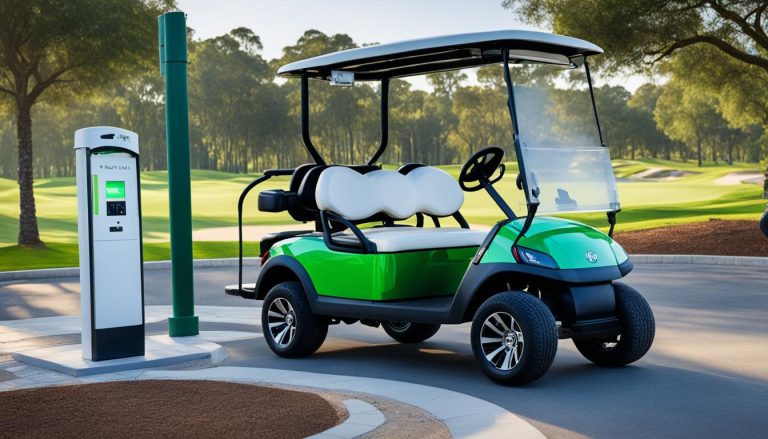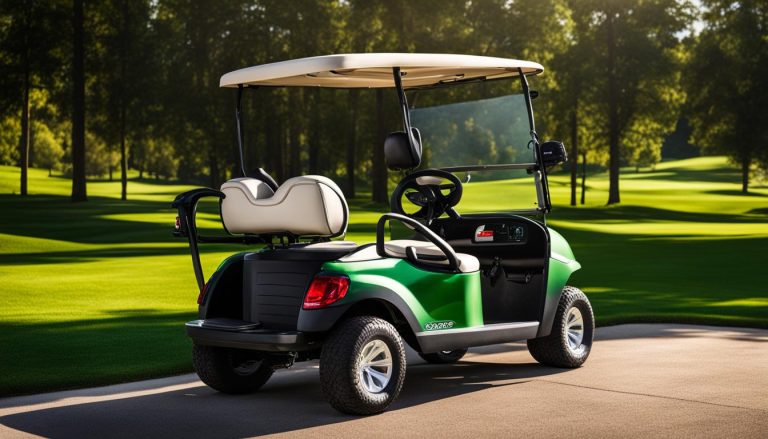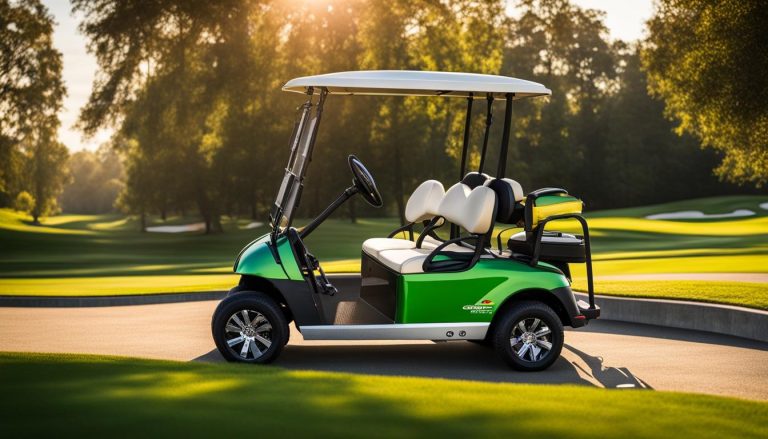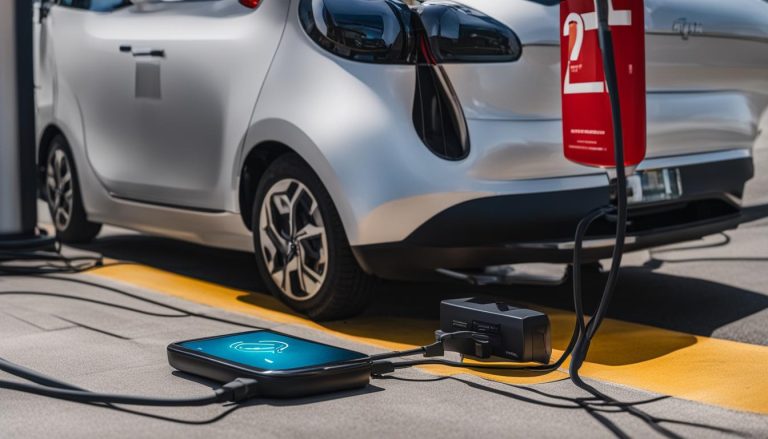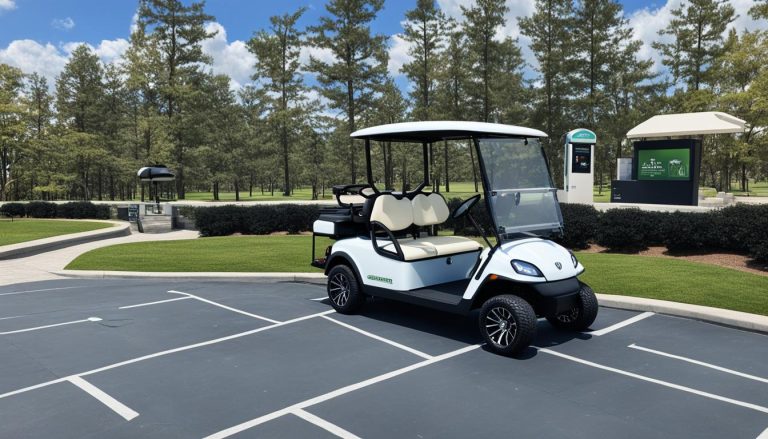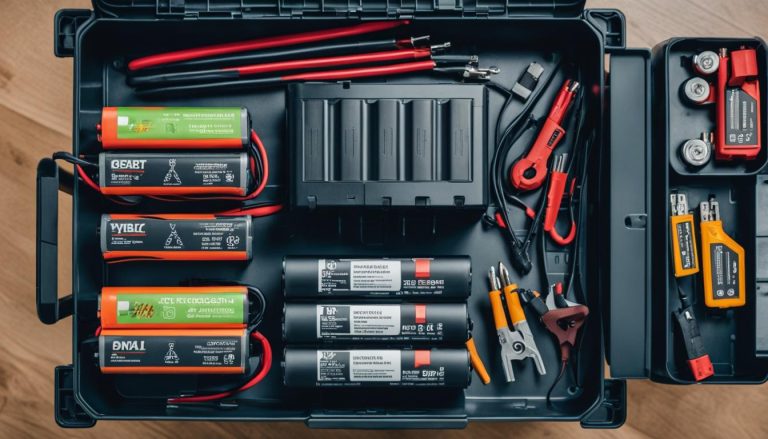Optimize Your Cart Battery Charging Experience
batterychargers.site and its partners may earn a commission if you purchase a product through one of our links
Welcome to our comprehensive guide on how to optimize your cart battery charging experience. Whether you use a cart for golfing, landscaping, or any other purpose, ensuring efficient and effective battery charging is essential for optimal performance. In this article, we will provide expert tips and tricks to help you get the most out of your cart battery charging process.
From understanding different battery types and their charging times, to choosing the best battery and charger for your specific needs, we will cover all the crucial aspects of cart battery charging. We will also delve into the effects of overcharging and undercharging, provide tips on battery maintenance, discuss the influence of external factors on charging, and help you troubleshoot any slow charging issues you may encounter.
By following these recommendations, you can prolong your cart’s battery life, maximize its performance, and avoid unnecessary downtime. Let’s get started!
Key Takeaways:
- Understanding different battery types is crucial for optimizing charging times.
- Choosing the right charger is essential for efficient battery charging.
- Overcharging and undercharging can have negative effects on battery lifespan.
- Regular battery maintenance is necessary for efficient charging and longevity.
- External factors like weather conditions and temperature can impact battery charging.
Understanding Battery Types and Their Charging Times
The type of battery used in your golf cart plays a crucial role in determining its charging times. Let’s explore the differences between lead-acid batteries and lithium batteries, as well as the benefits of choosing the best lithium golf cart battery.
Lead-Acid Batteries
Lead-acid batteries are the traditional choice for golf carts. These batteries are known for their durability but have a longer charging time. On average, lead-acid batteries require 8-12 hours to fully charge.
Lithium Batteries
In recent years, lithium batteries have become increasingly popular due to their superior performance and faster charging times. The best lithium golf cart batteries can charge in just 2-3 hours, offering a significant reduction in charging time compared to lead-acid batteries.
Not only do lithium batteries charge faster, but they also provide enhanced lifespan and performance. Their rapid charging capabilities ensure you spend less time waiting for your battery to recharge and more time enjoying the game. Additionally, lithium batteries are lighter in weight, making them a preferred choice for golf cart enthusiasts seeking improved maneuverability.
| Battery Type | Charging Time | Lifespan | Weight |
|---|---|---|---|
| Lead-Acid | 8-12 hours | 2-3 years | Heavier |
| Lithium | 2-3 hours | 5-7 years | Lighter |
As shown in the table above, lithium batteries offer a significant advantage in terms of charging time and overall performance. Investing in the best lithium golf cart battery can enhance your golfing experience and provide long-term cost savings.
Charger Types and Their Role in Charging Times
When it comes to charging your cart battery, the type of charger you use plays a crucial role in determining the charging times. Let’s explore the different charger types available and how they can impact your battery’s charging efficiency.
Standard Charger
A standard charger, commonly provided with golf carts, is a reliable choice for charging your battery. These chargers typically take 8-10 hours to fully charge a depleted battery. While they may not provide the fastest charging times, they are suitable for regular charging needs and ensure a complete charge.
Fast Charger
If you’re looking for quicker charging times, a fast charger might be the right choice for you. Fast chargers can charge a battery in 2-4 hours, significantly reducing the charging duration. However, it’s important to note that fast chargers may not be ideal for battery longevity. The accelerated charging process can put more strain on the battery, potentially affecting its lifespan.
Smart Charger
For those seeking the perfect balance between charging speed and battery health, smart chargers are the way to go. These advanced chargers adapt their charging process based on the battery’s condition and needs. By prioritizing battery health and longevity over speed, smart chargers ensure efficient charging while maintaining the lifespan of your battery. They provide optimized charging profiles tailored to your battery’s requirements, maximizing its overall performance.
By choosing the right charger type for your cart battery, you can optimize the charging times and ensure efficient battery performance.

Overcharging and Undercharging: The Effects on Your Battery
Properly managing the charge levels of your cart battery is essential for its longevity. Overcharging and undercharging can have detrimental effects on your battery’s performance and lifespan.
Overcharging: Overcharging occurs when you continue to charge your battery even after it has reached its full capacity. This can lead to overheating, which can cause damage to the battery cells. Over time, overcharging can result in capacity loss, meaning your battery will not hold its charge as effectively as it used to. This can significantly affect the overall lifespan of your battery, resulting in the need for more frequent replacements.
Undercharging: On the other hand, undercharging or letting your battery sit in a low charge state for extended periods can also have negative consequences. When a battery is not fully charged, sulfate crystals can form on the battery plates, reducing its capacity and overall performance. This can lead to decreased battery lifespan and a decrease in the amount of energy the battery can store.
To ensure optimum performance and longevity of your cart battery, it is crucial to avoid overcharging and undercharging. You should aim to charge your battery fully after each use, even for short durations. This will help maintain the battery’s capacity and prevent capacity loss over time. It is also recommended to use a charger with a built-in automated shut-off feature, which will prevent overcharging and ensure the battery is not left in a low charge state for extended periods.
| Effect of Overcharging | Effect of Undercharging |
|---|---|
| Overheating | Sulfate crystal formation |
| Capacity loss | Decreased battery lifespan |
| Shortened battery life | Reduced energy storage capacity |
Optimizing Battery Maintenance for Efficient Charging
Regular maintenance plays a crucial role in ensuring efficient charging for your cart battery. By following proper maintenance practices, you can maximize the performance and lifespan of your battery, resulting in optimal charging times. Here are some key steps to optimize your battery maintenance:
Clean Batteries
Keeping your batteries clean is essential for efficient charging. Dust and grime can obstruct the charging process and reduce the battery’s overall performance. Regularly inspect your batteries and clean them using a soft cloth or brush, ensuring that there is no buildup of dirt or debris.
Adequate Water Levels
Watering your batteries regularly is crucial for their optimal performance and charging efficiency. Check the water levels in each cell and ensure they are adequately filled. Use distilled water to top up the cells if needed. Maintaining the proper water levels prevents battery damage and promotes efficient charging.
Regular Inspection
Frequent inspections of your battery are essential to identify any potential problems or issues that may affect charging efficiency. Check for any signs of corrosion or damage to the battery terminals and cables. Tighten loose connections and replace any damaged components promptly to prevent charging disruptions.
Tip: Implementing a maintenance schedule for your cart battery can help you stay consistent and ensure that all necessary maintenance tasks are performed regularly. Set reminders for cleaning, watering, and inspections to keep your battery in prime condition.
Optimizing your battery maintenance routine is a fundamental step towards efficient charging. By keeping your batteries clean, maintaining adequate water levels, and conducting regular inspections, you can ensure optimal performance and prolong the lifespan of your cart battery.

The Influence of External Factors on Battery Charging
When it comes to charging your cart battery, it’s important to consider the impact of external factors. Weather conditions, temperature, and moisture can all affect the charging process and the performance of your battery.
Extreme temperatures, whether it’s scorching heat or freezing cold, can have a negative effect on battery charging. High temperatures can lead to increased battery discharge rates, reducing the overall efficiency and lifespan of your battery. On the other hand, extremely cold temperatures can cause the battery to lose its charge more quickly. It’s essential to store your cart in a cool, dry place to prevent these temperature-related issues.
Moisture is another external factor that can impact battery performance. Excessive moisture exposure can lead to corrosion and damage to the battery cells, affecting their ability to store and deliver energy efficiently. To protect your battery from moisture, ensure that your cart is stored in a dry environment and avoid exposing it to rain or other sources of moisture.
By being aware of these external factors and taking the necessary precautions, you can optimize your battery charging and prolong the lifespan of your cart battery.
Summary:
In summary, external factors such as weather conditions, temperature, and moisture can significantly impact the charging process and performance of your cart battery. Extreme temperatures can reduce battery efficiency, while excessive moisture exposure can lead to corrosion and damage. To optimize charging, store your cart in a cool, dry place and protect it from moisture. By considering these external factors, you can ensure efficient battery charging and prolong the life of your cart battery.
Troubleshooting Slow Charging Issues
If you are facing slow charging issues with your cart battery, don’t worry. There are several troubleshooting steps you can take to identify and resolve the problem effectively.
Firstly, check the battery health. A weak or deteriorating battery can result in slow charging. If your battery is old or showing signs of decline, it might be time for a battery replacement to restore optimal charging performance.
Additionally, ensure proper connectivity between the battery and charger. Loose or corroded connections can hinder the charging process. Clean the battery terminals and charger contacts, ensuring a secure and tight connection for efficient charging.
Lastly, address any potential connectivity issues. Check the charger and power source for any faults. Ensure the charger is functioning correctly and that you have a reliable power supply. Faulty chargers or inconsistent power sources can lead to slow charging problems.
FAQ
How long does it take to fully charge a cart battery?
The charging time of a cart battery depends on the battery type. Traditional lead-acid batteries typically require 8-12 hours to fully charge, while lithium batteries can charge in just 2-3 hours.
What type of charger should I use for my cart battery?
There are different types of chargers available for cart batteries. Standard chargers take 8-10 hours to fully charge a battery, while fast chargers can do it in 2-4 hours. Smart chargers are the most advanced, adapting their charging process to prioritize battery health and longevity over speed.
What are the effects of overcharging and undercharging on a cart battery?
Overcharging can lead to overheating, capacity loss, and reduced battery lifespan. Undercharging or letting the battery sit in a low charge state for extended periods can also decrease its lifespan and capacity.
How can I optimize the maintenance of my cart battery for efficient charging?
Regular maintenance is crucial for efficient charging. Keep the batteries clean from dust and grime, regularly water them to maintain adequate water levels, and ensure tight connections. Regular inspections can help prevent unexpected issues and ensure efficient charging times.
What are the external factors that can affect battery charging?
Weather conditions, temperature, and moisture can all impact battery charging. Extreme temperatures, both hot and cold, can reduce battery performance and efficiency. It is recommended to store your cart in a cool, dry place and protect it from excessive moisture exposure.
How can I troubleshoot slow charging issues with my cart battery?
To troubleshoot slow charging issues, you can check the battery health, ensure proper connectivity between the battery and charger, and address any potential connectivity issues. In some cases, slow charging may indicate the need for a battery replacement.

